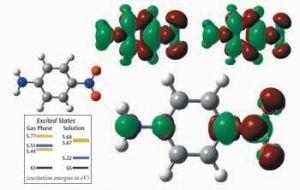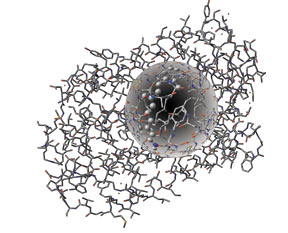|
Introduction
Gausview 5.0.9
Starting from the basic laws of quantum mechanics, Gaussian predicts the energies, molecular structures, and vibrational frequencies of molecular systems, along with numerous molecular properties derived from these basic computation types. It can be used to study molecules and reactions under a wide range of conditions, including both stable species and compounds which are difficult or impossible to observe experimentally such as short-lived intermediates and transition structures. Several reserach groups from various departments in our Institute use Gaussian package for doing advanced electronic structure theory calculations. These calculations can be used for predicting various properties of atoms, molecules, radicals, ions, weakly and strongly bound complexes, etc. Other groups use Gaussain to calculate the equillibrium structure and infrared and Raman frequencies and intensities. Some use it to calculate enthalpies of formation of various chemical species. It is especially useful if experimental data are not available. Enthalpy of reactions can be determined. Transition states connecting the reactant and product are extremely difficult for direct experimental investigations. Gaussian is also used by several groups for calculating the structure and energies of transition states. It enables one to calculate the rate of a chemical reaction which can be compared with experimental measurements for improved understanding. Theoretical calculations by Gaussian are used for detailed understanding of chemical bonding as well. Vendor : Gaussian Inc. Supplier : Gaussian Inc. LicenseType : Platform architecture specific node-locked,site-wide binary license for Indian Institute of Science. Availability of Gaussian at SERC : Gaussian 09– G09 is installed in the basic HPC clusters. This can be invoked on Tyrone, Tesla and Dell Clusters. The software can be used only through batch jobs using Torque on Tyrone and Delta Clusterand PBS on Tesla and Dell Cluster. These machines support only parallel jobs. Installation path:/home/pkg/lic/g09 Gaussian G09 Rev: D.01 (New) Currently G09 Rev: D.01 is installed. This can be invoked on Tyrone and Dell Clusters. Tyrone-Cluster (AMD Processor) Environmental variables setenv g09root /home/pkg/lic/g09-R01/amd64 Dell-Cluster (Intel Processor) Environmental variables setenv g09root /home/pkg/lic/g09-R01/em64t Report Problems to: For any problems with respect to Gaussian software, send email to helpdesk.serc@auto.iisc.ac.in or contact System Administrators in Room no. 109, SERC . |

SUPERCOMPUTER EDUCATION AND RESEARCH CENTRE
WELCOME TO SERC

